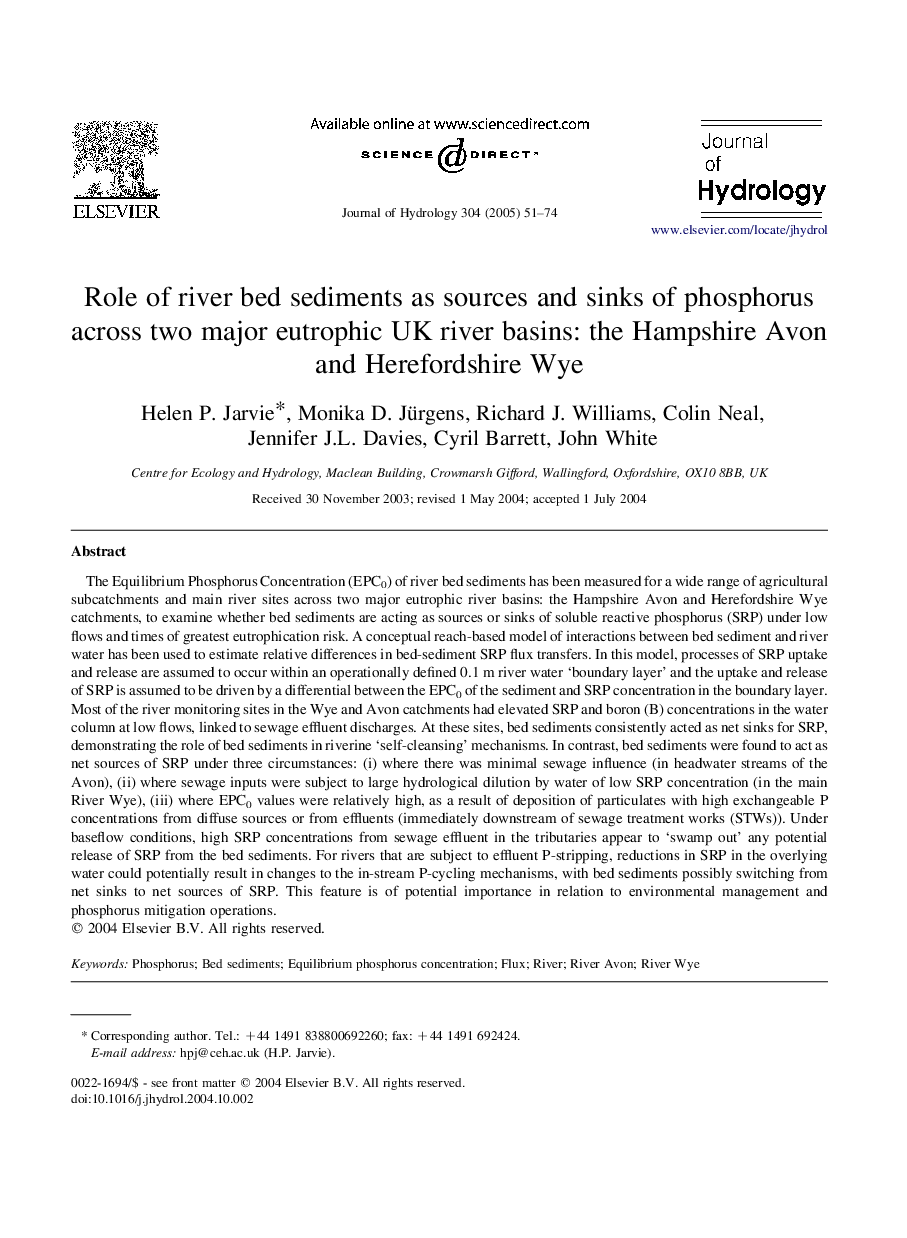| کد مقاله | کد نشریه | سال انتشار | مقاله انگلیسی | نسخه تمام متن |
|---|---|---|---|---|
| 9491527 | 1630187 | 2005 | 24 صفحه PDF | دانلود رایگان |
عنوان انگلیسی مقاله ISI
Role of river bed sediments as sources and sinks of phosphorus across two major eutrophic UK river basins: the Hampshire Avon and Herefordshire Wye
دانلود مقاله + سفارش ترجمه
دانلود مقاله ISI انگلیسی
رایگان برای ایرانیان
موضوعات مرتبط
مهندسی و علوم پایه
علوم زمین و سیارات
فرآیندهای سطح زمین
پیش نمایش صفحه اول مقاله

چکیده انگلیسی
The Equilibrium Phosphorus Concentration (EPC0) of river bed sediments has been measured for a wide range of agricultural subcatchments and main river sites across two major eutrophic river basins: the Hampshire Avon and Herefordshire Wye catchments, to examine whether bed sediments are acting as sources or sinks of soluble reactive phosphorus (SRP) under low flows and times of greatest eutrophication risk. A conceptual reach-based model of interactions between bed sediment and river water has been used to estimate relative differences in bed-sediment SRP flux transfers. In this model, processes of SRP uptake and release are assumed to occur within an operationally defined 0.1Â m river water 'boundary layer' and the uptake and release of SRP is assumed to be driven by a differential between the EPC0 of the sediment and SRP concentration in the boundary layer. Most of the river monitoring sites in the Wye and Avon catchments had elevated SRP and boron (B) concentrations in the water column at low flows, linked to sewage effluent discharges. At these sites, bed sediments consistently acted as net sinks for SRP, demonstrating the role of bed sediments in riverine 'self-cleansing' mechanisms. In contrast, bed sediments were found to act as net sources of SRP under three circumstances: (i) where there was minimal sewage influence (in headwater streams of the Avon), (ii) where sewage inputs were subject to large hydrological dilution by water of low SRP concentration (in the main River Wye), (iii) where EPC0 values were relatively high, as a result of deposition of particulates with high exchangeable P concentrations from diffuse sources or from effluents (immediately downstream of sewage treatment works (STWs)). Under baseflow conditions, high SRP concentrations from sewage effluent in the tributaries appear to 'swamp out' any potential release of SRP from the bed sediments. For rivers that are subject to effluent P-stripping, reductions in SRP in the overlying water could potentially result in changes to the in-stream P-cycling mechanisms, with bed sediments possibly switching from net sinks to net sources of SRP. This feature is of potential importance in relation to environmental management and phosphorus mitigation operations.
ناشر
Database: Elsevier - ScienceDirect (ساینس دایرکت)
Journal: Journal of Hydrology - Volume 304, Issues 1â4, 10 March 2005, Pages 51-74
Journal: Journal of Hydrology - Volume 304, Issues 1â4, 10 March 2005, Pages 51-74
نویسندگان
Helen P. Jarvie, Monika D. Jürgens, Richard J. Williams, Colin Neal, Jennifer J.L. Davies, Cyril Barrett, John White,